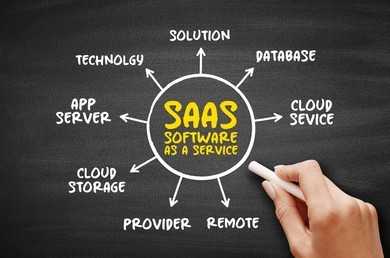Are you tired of the same old SaaS Content Marketing strategies that everyone seems to be using? It’s time to shake things up and explore innovative tactics that can give your SaaS company the edge. In this article, we’ll dive into some cutting-edge content marketing strategies specifically designed for SaaS businesses. Get ready to discover new ways to engage your audience, boost your brand, and drive conversions.
Understanding Your Audience
Creating Detailed Buyer Personas
First things first, you need to know who you’re talking to. Creating detailed buyer personas is essential for understanding your audience’s needs, preferences, and pain points. These personas should be based on real data gathered from customer interactions, surveys, and market research. By knowing your audience inside out, you can tailor your content to resonate with them on a deeper level.
Utilizing Customer Feedback for Content Ideas
Customer feedback is a goldmine for content ideas. Actively seek out feedback through surveys, social media, and direct interactions. Use this feedback to create content that addresses common questions, solves problems, and provides value. This not only helps in content creation but also shows your customers that you value their opinions.
Content Personalization
Dynamic Content Strategies
Personalization is no longer a luxury; it’s a necessity. Dynamic content strategies allow you to deliver personalized content to your audience based on their behavior, preferences, and interactions with your site. This could be personalized recommendations, tailored blog posts, or customized landing pages that speak directly to the user’s interests.
Personalized Email Campaigns
Gone are the days of generic email blasts. Personalized email campaigns that address the recipient by name and provide content based on their previous interactions with your brand can significantly increase engagement and conversion rates. Use data from your CRM to segment your email list and create targeted campaigns that resonate with each segment.
Interactive Content
Quizzes and Surveys
Interactive content like quizzes and surveys can be incredibly engaging. They not only attract attention but also provide valuable insights into your audience’s preferences and behavior. Create fun, informative quizzes related to your SaaS product, or conduct surveys to gather feedback and improve your offerings.
Interactive Infographics
Infographics are a great way to present data and information visually, but why not take it a step further with interactive infographics? These can include clickable elements, animations, and embedded links that provide a richer user experience and keep visitors on your page longer.
Video Content
Live Streaming and Webinars
Video content is king, and live streaming and webinars are powerful tools for SaaS companies. They offer a way to engage with your audience in real-time, answer questions, and demonstrate your product’s capabilities. Host regular webinars on industry trends, product updates, and how-tos to establish your authority and build trust with your audience.
Customer Testimonials and Case Studies
Video testimonials and case studies bring your success stories to life. Seeing real customers talk about their positive experiences with your product can be much more persuasive than written testimonials. Invest in creating high-quality videos that showcase how your SaaS product has made a difference for your customers.
User-Generated Content
Encouraging Customer Reviews
Encourage your customers to leave reviews and share their experiences on social media. User-generated content (UGC) not only provides social proof but also creates a sense of community around your brand. Feature these reviews on your website and social media channels to build credibility and trust.
Creating a Community Forum
Creating a community forum where your customers can interact, ask questions, and share insights can be a great way to generate UGC. It fosters a sense of belonging and encourages customers to contribute content, which can be a valuable resource for potential new customers.
Collaborative Content
Partnering with Industry Influencers
Collaborating with industry influencers can amplify your reach and credibility. Identify influencers who align with your brand values and audience, and work together on content such as blog posts, webinars, and social media campaigns. This partnership can introduce your SaaS product to a broader audience and lend credibility to your brand.
Co-creating Content with Customers
Involve your customers in the content creation process. Whether it’s through guest blog posts, case studies, or collaborative webinars, co-creating content with your customers can provide unique insights and perspectives. This not only strengthens your relationship with existing customers but also shows potential customers the value and trust others place in your product.
Advanced SEO Techniques
Long-Tail Keywords
While everyone is targeting broad keywords, you can gain an edge by focusing on long-tail keywords. These are more specific and less competitive, making it easier to rank higher in search results. Use tools like Google Keyword Planner to find long-tail keywords relevant to your SaaS product and incorporate them into your content.
Topic Clusters and Pillar Pages
Organizing your content into topic clusters with pillar pages can improve your SEO and user experience. A pillar page acts as a comprehensive resource on a broad topic, linking to cluster content that covers related subtopics in depth. This structure not only helps search engines understand your content better but also keeps users engaged by providing them with a wealth of information on a single topic.
Content Distribution Channels
Leveraging Social Media Platforms
Social media is a powerful distribution channel for SaaS content. Each platform has its unique audience and strengths, so tailor your content to fit each one. Use LinkedIn for professional, in-depth articles, Twitter for quick updates and links, and Instagram for visually engaging content and behind-the-scenes looks.
Utilizing Content Syndication Networks
Content syndication networks allow you to distribute your content to a wider audience by republishing it on other sites. This can drive more traffic to your site and increase your content’s reach. Look for reputable syndication networks in your industry and submit your best-performing content for syndication.
Repurposing Content
Turning Blogs into E-books
Repurposing your existing content can save time and expand your reach. For example, you can compile a series of related blog posts into a comprehensive e-book. This not only gives new life to your content but also provides a valuable resource for your audience that can generate leads and establish your authority on a topic.
Creating Podcasts from Webinars
Podcasts are another great way to repurpose content. Record the audio from your webinars and turn them into podcast episodes. This allows you to reach a different audience who may prefer listening over reading or watching videos.
Data-Driven Content Marketing
Analyzing Content Performance Metrics
Data-driven marketing is all about making informed decisions based on data. Regularly analyze your content performance metrics such as page views, bounce rates, and conversion rates to understand what’s working and what’s not. Use these insights to refine your content strategy and focus on creating content that resonates with your audience.
Using Predictive Analytics
Predictive analytics can help you anticipate future trends and customer behavior. By analyzing historical data, you can identify patterns and make data-driven predictions about what content will be most effective. This allows you to stay ahead of the curve and continually optimize your content strategy.
Storytelling Techniques
Crafting Compelling Brand Narratives
Storytelling is a powerful tool in content marketing. Craft compelling brand narratives that resonate with your audience on an emotional level. Share the story of your company’s journey, the challenges you’ve overcome, and the impact your product has made. This helps build a strong connection with your audience and makes your brand more relatable.
Utilizing Customer Success Stories
Customer success stories are a form of storytelling that highlights how your product has helped real customers achieve their goals. These stories provide social proof and demonstrate the value of your product in a relatable and engaging way. Feature these stories prominently in your marketing materials to build trust and credibility.
Leveraging AI in Content Creation
AI-Powered Content Generation Tools
AI-powered tools can help streamline your content creation process. Tools like Jasper and Copy.ai can generate high-quality content ideas, outlines, and even complete articles based on your input. This can save you time and help you produce more content faster.
Personalizing User Experience with AI
AI can also be used to personalize the user experience. By analyzing user behavior and preferences, AI can deliver personalized content recommendations, dynamic web pages, and customized email campaigns. This not only improves the user experience but also increases engagement and conversions.
Content Automation
Automating Social Media Posts
Automation tools like Hootsuite and Buffer can help you manage and schedule your social media posts. This allows you to maintain a consistent presence on social media without having to manually post each update. You can plan your content calendar in advance and ensure that your social media channels are always active and engaging.
Using CRM Systems for Content Distribution
CRM systems like HubSpot and Salesforce can automate the distribution of your content to your leads and customers. You can set up workflows that automatically send personalized content to your contacts based on their behavior and preferences. This ensures that your audience receives the right content at the right time, increasing the chances of conversion.
Measuring Success and ROI
Key Performance Indicators (KPIs) for SaaS Content
Measuring the success of your content marketing efforts is crucial. Identify key performance indicators (KPIs) that align with your goals, such as lead generation, conversion rates, and customer retention. Regularly track these KPIs to evaluate the effectiveness of your content and make data-driven adjustments as needed.
Tools for Measuring Content ROI
There are various tools available to help you measure the return on investment (ROI) of your content marketing efforts. Google Analytics, HubSpot, and SEMrush are popular options that provide detailed insights into your content’s performance. Use these tools to track metrics such as traffic, engagement, and conversions, and to calculate the ROI of your content marketing campaigns.
Conclusion
Innovative content marketing strategies can set your SaaS business apart from the competition. By understanding your audience, personalizing content, leveraging interactive and video content, and utilizing advanced SEO techniques, you can create a powerful content marketing strategy that drives engagement and conversions. Remember, the key to success is to continuously analyze your performance, adapt to new trends, and always strive to provide value to your audience.



